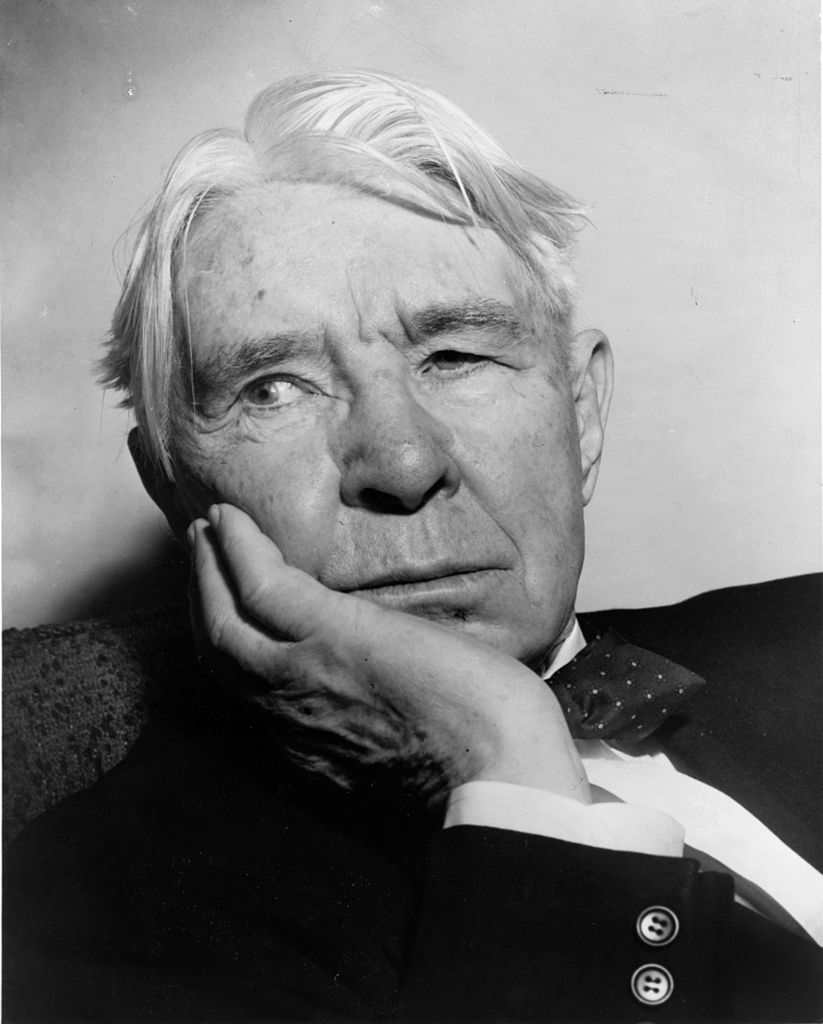Carl Sandburg- A winner of three Pulitzer prizes, Carl Sandburg (1795-1821) was born to parents of Swedish ancestry in Galesburg, Illinois. The American poet quit school following his graduation from the eighth grade in 1891 and went on to try his hand at variety of jobs. He then quit the jobs and travelled alone, during which he came in contact with folk songs. It was his college years that shaped Sandburg’s literary talents and political view, under the close watch of Lombard professor Phillip Green Wright. The latter was his mentor who honed Sandburg’s writing skills and inculcated the socialist views into his life. After marrying Lillian Steichen, Sandburg returned to Illinois and started working for the Chicago Times as a reporter.
Setting of Branches-
April is the word quite repeatedly mentioned in the poem, giving us a clear idea about the setting of the poem. A day of the month of April is explained in detail. Sandburg uses different sound words to give the reader a clear picture of the season’s setting. It does raise a doubt on whether the poet is merely indicating towards the month of April or is he speaking about any specific season of his yesteryears.
Poetic Devices in Branches-
Anaphora: “Dancing girls here”, “The long beautiful night”
Repetition: “April”, “Morning”
Personification:
Line 3- “Swinging, swaying, to the wind for a partner, to the rain for a partner.”
Line 4- “What is the humming, swishing thing they sing in the morning now?”
Line 5- “The rain, the wind, the swishing whispers of the long slim curve so little and”
Line 6- “these dancing girls”
Metaphor: “these dancing girls”- the rain, the wind and the branches are being compared to the dancing girls.
Style-
The poem has no particular meter or rhyme scheme like the other poems by the poet. The poem Branches is written in a typical free verse aphoristic style with complex, long lines and a dominating theme of season. The poem is donned with picturesque images of changes in nature during the month of April. The words used are simple while the symbols are finite and strong.
Summary of Branches-
Sandburg begins the poem with the mention of “the long beautiful night” (line 1) of April with wind and rain. The night is deeply bent like the “drooping branches” (line 2) and is in search of a partner through the “swinging” and “swaying”. Then he moves on to ask about the “humming” and “swishing” that the branches do in the morning. There is an impact of the rain, wind and the swishing of branches in the April morning with a sky darkened by the rain clouds. Then the speaker moves on to speak about the gay “dancing girls”, who are seen in the April morning. He says they had spent the night beautifully with their respective partners learning about that “year’s song of April.”
Critical Analysis of Branches-
The poem Branches is a seven line long poem with each line spreading out like branches of a tree. Each line is irregularly long with no external rhyme altogether. Sandburg speaks of the branches as dancing girls and gives them the attributes of a human. The April morning and night are sketched through the qualities of wind, rain and the drooping branches. He gives them the human attributes like swinging, swaying, humming and swishing. According to the speaker of the poem, they are earnestly looking for a partner amongst the chaos of night. He says that these girls have finally found their mate and spent a beautiful night with them learning about the year’s song of April. The imprints, they are dark and subtle.
Tone of Branches-
An yearning can be felt throughout the poem. So one can assume that the poem is the poet’s longing for a partner. He uses nature’s qualities to get to the point. The poem is vague to an extent, yet imparts an aura of emotional repartee.
Central Idea of Branches-
The poem mainly speaks about the April month, the features of its day and night, and how inseparable are the rain, wind and the branches that fully experience the former. They are like partner who share the beauty of night and learn the secrets of the month.
Conclusion- The nature is like lovers with their own pairs. The rain showers down to earth and the wind gushes by melodiously through the branches of trees like whispering some sweet little love song. After a long beautiful night of April gives way to morning, they share the sweet song of April, making the branches dance to the tune.
Some online learning platforms provide certifications, while others are designed to simply grow your skills in your personal and professional life. Including Masterclass and Coursera, here are our recommendations for the best online learning platforms you can sign up for today.
The 7 Best Online Learning Platforms of 2022
- Best Overall: Coursera
- Best for Niche Topics: Udemy
- Best for Creative Fields: Skillshare
- Best for Celebrity Lessons: MasterClass
- Best for STEM: EdX
- Best for Career Building: Udacity
- Best for Data Learning: Pluralsight
















